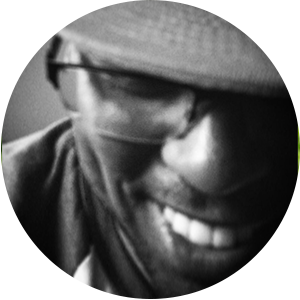Last month, I attended Streamer University.
Okay, that’s not true at all. What really happened was a video from one of the classes at Streamer University came across my FYP on TikTok. After watching the clip in its entirety and reading the comments, more clips from the event appeared on my feed. At that point, I was fully locked in and started watching and rewatching every clip the algorithm sent my way. With each replay, I started to learn more and more about streamer culture, and how certain elements could really improve how higher education is communicating with its younger audiences if we could let go of biases and get out of our own way.
Actually, I might be getting ahead of myself and making some of you wonder, “What is Streamer University?” Let me rewind a bit to catch you up.
What is Streamer University?
Streamer University was a live, in-person creator academy where more than 150 selected streamers were invited to the University of Akron’s campus to learn and network with one another for a weekend. Created by Kai Cenat (one of the biggest streamers in the world), the event brought a mix of big and small streamers to a college setting with classes led by prominent content creators that covered topics like how to build an audience, how to monetize a channel, how to handle negativity, how to take care of your health while making content, and much more.
Personally, my feelings about what I watched were all over the place. From the clips I watched, I found it to be equal parts brilliant, dystopian, hilarious, horrifying, heartwarming, and at some points sad.
A Note on Clip Farming
Not everything that happened at Streamer University was great. Bringing together that many people whose livelihoods are based on getting attention is bound to lead to some sophomoric, crass, problematic, and potentially dangerous moments.
Clip farming is a big part of streamer culture. For those who don’t know, clip farming is where you create content with the sole purpose of gaining more attention. In the world of streaming there is no such thing as “bad or negative attention.” This means the more ludicrous you sound in clips or the more outlandish your pranks are the better. So, they create these moments hoping that their audience takes these clips, shares them, and hopefully causes their presence to grow. This practice can lead to some moments that universities don’t want to be associated with.
With that little disclaimer out of the way, let’s back to the takeaways!
Insights from Streamer University
- First, let’s talk about the classes. Even though I was only able to catch sessions one TikTok at a time, I found the classes to be incredibly informative. My favorite professor at the event is a streamer named Agent 00. His videos about how watch time is king and the true purpose of TikTok are what made me pay attention.
- One of the common critiques emerging from the event was that the smaller creators didn’t fully utilize the access they had to streamers with larger audiences. Instead of interacting or being active participants in others’ streams, they stayed to themselves and in their comfort zone. This isn’t just a streamer issue. We see this happening with a growing subsection of students. They find it hard to make interpersonal connections and lose out on social opportunities as a result. This is often attributed to fear and anxiety, and being tethered to a digital “safe space” only exacerbates the problem.
- On the flip side, collaboration and audience sharing were key components of Streamer University. This is a group that streams multiple times a day (for example, an attendee named Emily CC was live on stream for over three years straight) no matter what they are doing. So it’s no surprise that nearly every clip I watched featured multiple people streaming at once no matter if it was in the dorms, in class, or anywhere else. In some cases, as many as four or five individuals were simultaneously broadcasting their perspectives, creating a shared, multi-angle experience for their audiences. It made me think about how this could change the way we cover university events. Instead of creating content from one person’s perspective (normally an administrator), what if we activate multiple attendees and start making videos that take dozens or even hundreds of POVs into account?
- I know what I said about clip farming earlier, but it doesn’t always have to be a negative thing. Taking the most interesting slice of a larger piece and sharing that, is a good way to build an audience. Texas A&M’s Physics and Astronomy department utilizes this technique for YouTube Shorts and the results speak for themselves.
- From a university perspective, you have to be open to unprecedented opportunities. Several schools were approached about hosting Streamer University, and they all fell through for one reason or another. Then, after Michael Matthews, a member of Kai Cenat’s Production and Creative team and University of Akron alum, saw the type of content Akron’s president RJ Nemer was posting on Instagram, he had a feeling he could make a connection happen. Turns out he was right, and this fit in perfectly with the University’s mission to “say ‘yes’ to bold, new ideas.” In uncertain times, it’s going to be vital for schools to take these types of calculated risks.
The Biggest Takeaway from Streamer University
Perhaps the biggest takeaway from Streamer University is that, like it or not, a lot of what I saw — and what you can see for yourself — points to a structural issue with higher ed marketing. There are some people (especially those who don’t understand the appeal of streaming) who might dismiss Streamer University as just another silly thing that young people do that lacks substance. They’ll see the moments of unseriousness, they’ll hear some of the crass language, they’ll see the age demographic, and they’ll write it off.
And that, of course, is one of higher ed’s enduring limitations: Higher ed marketers often don’t take their target demographic’s interests seriously. It’s the reason it takes higher education so long to adapt to new technology or emerging platforms. Think about some of the content that’s being put out to attract prospective students: Oftentimes, you can’t tell if it was made 10 years ago or 10 days ago. That’s a problem.
If we choose to dismiss or discredit what we see in a place like Streamer University, we miss what makes this event and these creators so appealing. Those who dismiss it won’t see the audience’s demand for authenticity, they won’t see that a simple shift in point of view can completely change the feeling of a moment, and, most importantly, they will totally miss how younger audiences are hungry for a feeling of connection with both the content and the creator.






